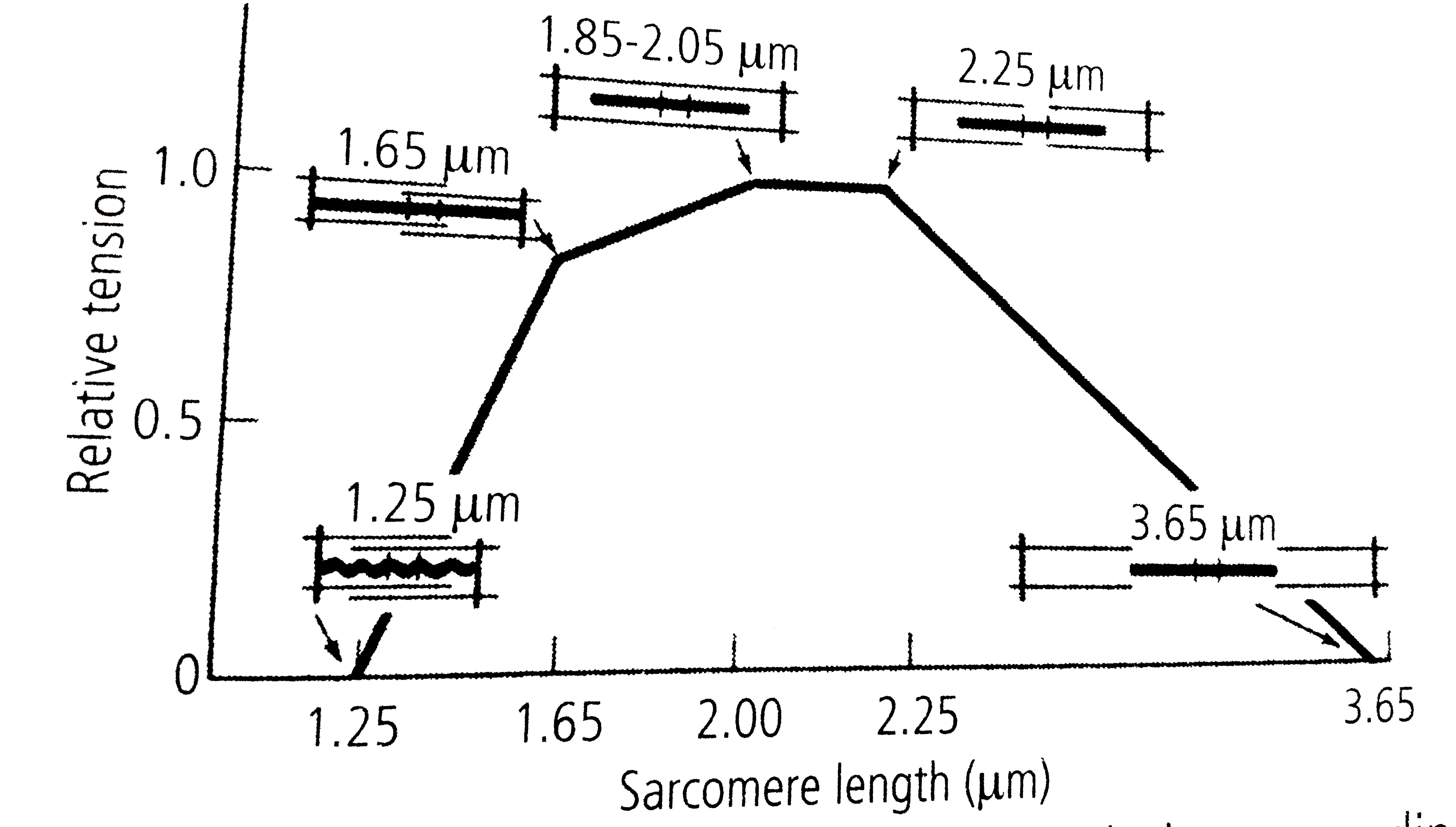H-zone of striated muscle fibre represents both thick and thin filaments.
The correct Answer is:False
Step-by-Step Solution:
1. Understanding the Structure of Striated Muscle Fiber:
- Striated muscle fibers are composed of repeating units called sarcomeres, which are the basic functional units of muscle contraction.
2. Identifying the A Band and H Zone:
- Within a sarcomere, there are different bands. The A band is the dark band that contains both thick (myosin) and thin (actin) filaments.
- The H zone is located in the center of the A band.
3. Characteristics of the H Zone:
- The H zone appears as a lighter band within the A band.
- It is important to note that the H zone specifically contains only thick filaments (myosin) and does not include any thin filaments (actin).
4. Conclusion about the Statement:
- The statement in the question claims that the H zone represents both thick and thin filaments. This is incorrect.
- Therefore, the statement is false because the H zone only contains thick filaments.
Final Answer:
The H-zone of striated muscle fiber represents only thick filaments and not both thick and thin filaments. Thus, the statement is false.
---
- Striated muscle fibers are composed of repeating units called sarcomeres, which are the basic functional units of muscle contraction.
- Within a sarcomere, there are different bands. The A band is the dark band that contains both thick (myosin) and thin (actin) filaments.
- The H zone is located in the center of the A band.
- The H zone appears as a lighter band within the A band.
- It is important to note that the H zone specifically contains only thick filaments (myosin) and does not include any thin filaments (actin).
- The statement in the question claims that the H zone represents both thick and thin filaments. This is incorrect.
- Therefore, the statement is false because the H zone only contains thick filaments.
The H-zone of striated muscle fiber represents only thick filaments and not both thick and thin filaments. Thus, the statement is false.
Topper's Solved these Questions
Similar Questions
Knowledge Check
The given graph shows length-tension curve for a typical vertebrate sarcomere.

By analysing the graph, what can you deduce regarding the muscle contraction?
(i) Neither the myosin filaments nor the actin thin filaments change in length when a sarcomere shortens or is stretched. Instead, it is the extent of ocerlap between actin and myosin filaments that changes.
(ii) The total tension produced by a sarcomere is proportional to the total number of cross-bridges that can interact with actin filaments, and this number in turn is proportional to the amount of of overlap between thick and thin filaments.
(iii) The tension produced by the muscle is maximal when the overlap between thick and thin filamentss allows the largest number of myosin cross-bridges to bind to actin.
(iv) Tension drops off with increased lenght, because the thick and thin filaments overlap less and fewer cross-bridges can bind.
Tension drops off with decreased length, because thin filaments at the two ends of the secromere begin to collide with each other, preventing further shortening.A(i) OnlyB(i),(iii) and (iv)C(i),(iii),(iv) and (v)D(i),(ii),(iii),(iv) and (v)
Which protein is present in thick flament and thin filament ?
View SolutionWhat happens to the l band and H zone during contraction? Do the lengths of the thick and thin filaments change ?
View SolutionAssertion : Contraction of a muscle fibre takes place by the sliding of the thin filaments over the thick filaments.
Reason : The central part of thick filament is not overlapped by thin filaments in a resting state.
View SolutionIn the region of A-band of a myofibril of a skeletal muscle where thick and thin filaments overlap. each thick filament is surrounded by
View SolutionOne myosin filament in the myofibril of skeletal muscle fibre is surrounded by how many actin filaments ?
View SolutionIsotropic band in a striated muscle fibre
View SolutionThe following diagram shows a thin myofilament of striated muscle fibre. Choose the option that correctly identifies a part of it along with its feature.

View Solution
